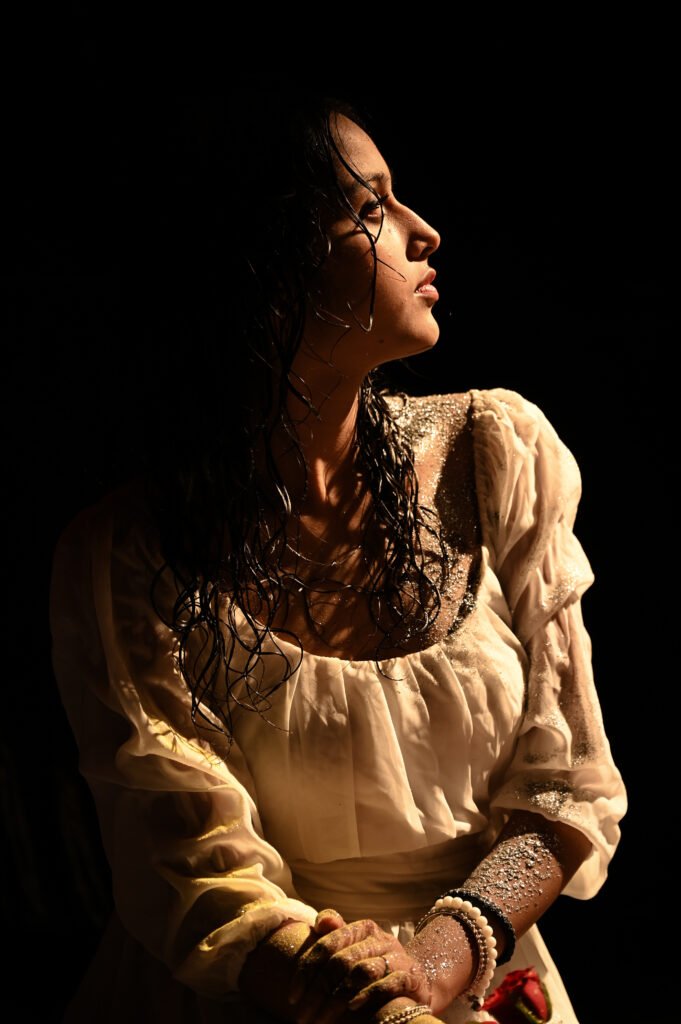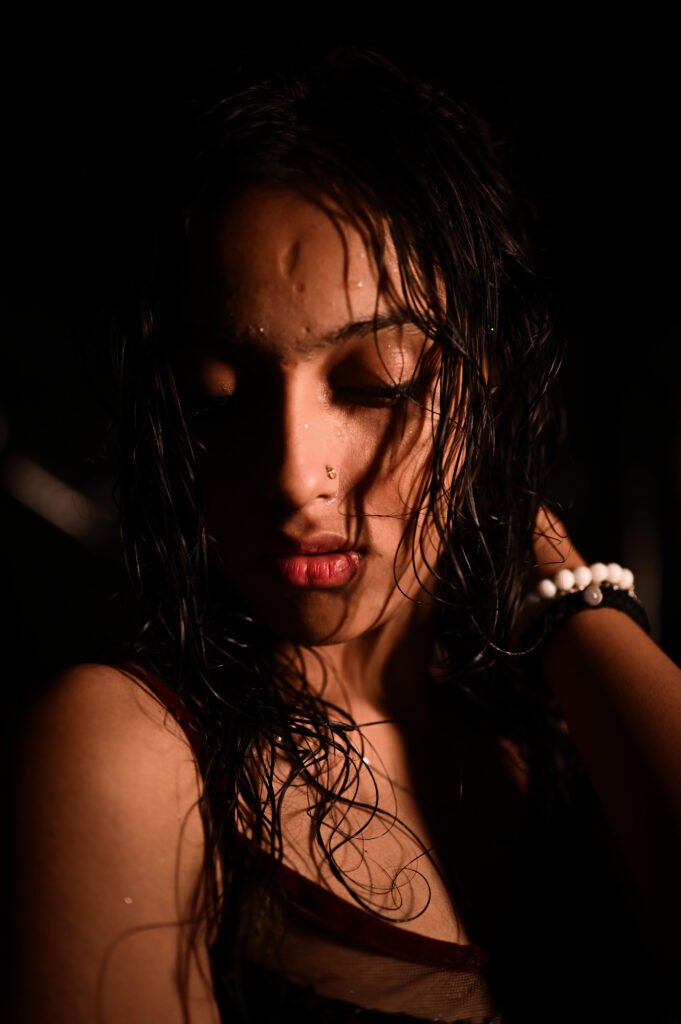
Water splash photography is a captivating genre that combines the elegance of motion with the technical prowess of photography and cinematography. At PIWF Institute, we recently hosted a specialized session focused on capturing the stunning beauty of water in motion. This blog post will guide you through our approach and provide insights into mastering this intriguing art form.
Setting the Scene
Our session began with a deep dive into the essentials of creating the perfect setup for water splash photography. The key elements include:

























- Location and Background:
- We opted for a dark, indoor studio with black backgrounds. This choice helps to eliminate distractions and makes the water droplets stand out prominently.
- The black backdrop serves as a canvas, highlighting the subject and the water’s movement.
- Lighting:
- Lighting is crucial. We used a single strobe light positioned above and slightly behind the subject. This creates a dramatic effect, casting light on the water droplets and accentuating the subject’s contours.
- The strobe light helps freeze the motion, capturing the water’s dynamic patterns crisply.
Camera Settings for Success
Capturing the perfect water splash image requires precise camera settings. Here’s what we recommend:
- Aperture: Use a narrow aperture (f/8 to f/11) to achieve a deep depth of field, ensuring both the subject and water are in focus.
- Shutter Speed: A fast shutter speed (1/1000th of a second or faster) is essential to freeze the motion of the water.
- ISO: Keep the ISO low (100-400) to minimize noise and maintain image quality.
Subject and Water Coordination
The interplay between the subject and the water is vital:
- Positioning: The subject should be in a natural, relaxed pose, either kneeling or sitting, to complement the water’s dynamic motion.
- Wardrobe: Light-colored or white clothing contrasts beautifully against the dark background and highlights the water splash.
- Water Effect: An assistant pours water over the subject’s head from a height, creating a spectacular splash. Timing the shot to capture the peak moment of the water’s spread is key.
Capturing the Perfect Shot
Using burst mode on the camera, we were able to take multiple shots in quick succession, ensuring we captured the ideal moment when the water was mid-air. Pre-focusing on the subject’s face or upper body ensured sharpness, and post-processing in black and white enhanced the contrast and textures, making the water droplets stand out.
Post-Processing Techniques
Post-processing plays a crucial role in perfecting water splash images:
- Convert to Black and White: This enhances contrast and brings out the intricate details of the water droplets.
- Adjust Contrast and Brightness: Fine-tuning these settings helps to make the water droplets more pronounced against the dark background.
- Selective Sharpening: Enhancing the details of the water and subject adds a polished touch to the final image.
Join Us at PIWF Institute
At PIWF Institute, we provide hands-on training and expert guidance to help you master complex photography techniques like water splash photography. Our courses cover various aspects of wedding cinematography, photography, and video editing, ensuring a comprehensive learning experience. Whether you’re a budding photographer or a seasoned professional, our workshops are designed to elevate your skills and creativity.
If you’re passionate about photography and eager to learn, join us at PIWF Institute. Our upcoming batch starts on 1st August 2024, and admissions are open. Embark on a journey to master the art of capturing breathtaking images and create unforgettable visual stories.
For more details, visit our website or contact us directly. We look forward to seeing you at PIWF Institute!



